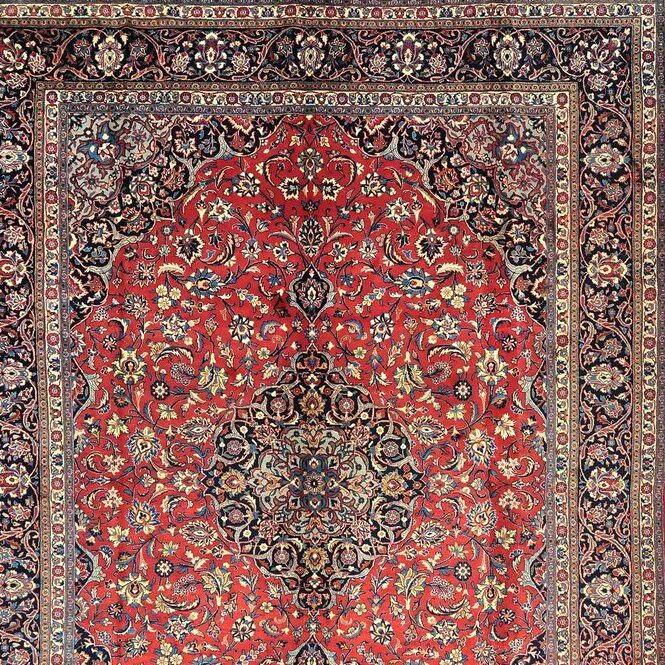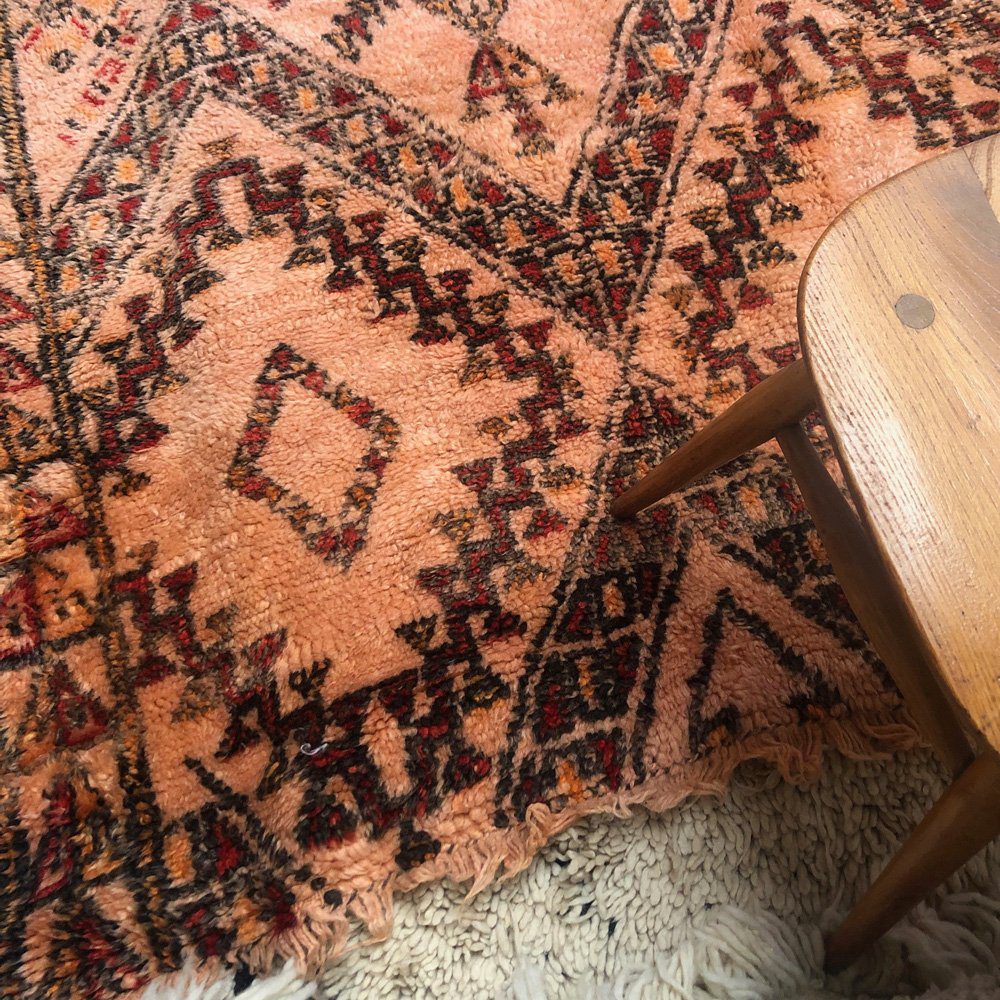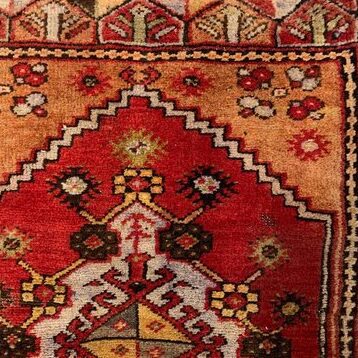Turkish Rugs: Unveiling their Rich Tradition
Turkish rugs have a legacy steeped in history and artistry. Explore the captivating world of Turkish rug-making, where age-old traditions meet modern design sensibilities.
Turkish rugs have always been a symbol of exquisite craftsmanship and cultural significance. The intricate patterns, rich colours, and meticulous attention to detail make them sought-after pieces of art. Let's dive into the fascinating world of Turkish rugs, exploring their history, types, and what makes them so unique.
From Vintage Gems to Modern Delights
Turkish rugs offer a wide spectrum of styles, from vintage classics to contemporary masterpieces. Delve into the diversity of Turkish rugs, including the timeless charm of vintage pieces and the allure of modern Turkish style rugs.

Red Carpet Wonders: Turkish Red Carpets
Turkish red carpets have an iconic status in the world of entertainment and events. Learn about the history and significance of these luxurious carpets, often associated with prestige and grandeur.
Evolution of Turkish Rugs and Characteristics
Turkish rugs represent a cornerstone of cultural expression and artisanal heritage, with a history that weaves through millennia, originating in the nomadic tribes of Central Asia. These tribes brought their intricate weaving techniques to Anatolia, laying the foundation for a craft that would flourish under the Ottoman Empire. Turkish rugs, known for their intricate designs, vibrant colours, and unique knots, have become symbols of the rich Turkish tradition.
The tradition of rug making in Turkey is characterized by two distinctive styles: the geometric patterns of the nomadic tribes and the elaborate motifs influenced by Islamic art and Persian designs introduced during the Ottoman period. This blend of influences has given birth to a variety of styles, including the famous Hereke and Oushak rugs. Hereke rugs are renowned for their fine silk and elaborate patterns, while Oushak rugs are prized for their more subdued colours and larger, more stylized floral designs.
Artisans in Turkey have historically used wool, silk, and cotton, employing natural dyes extracted from plants and insects to create a palette of rich, enduring colours. The art of rug making is passed down through generations, with each hand-knotted rug taking months to complete, making every piece a unique testament to its maker's skill and creativity.
Today, Turkish rugs continue to be highly valued for their aesthetic beauty, craftsmanship, and cultural significance, adorning homes and collections worldwide. They not only preserve a piece of Turkish heritage but also represent the enduring appeal of handmade artistry in a modern world.
Joe Rugs - Carpet Expert
Hello! I'm Joseph Rugs, the founder of CarpetJoe.com and your guide through the intricate world of carpets. Born and raised in London with a deep-rooted passion for art and culture, I've explored the globe to bring the rich tapestry of carpet weaving right to your screen. My academic background in arts and humanities from Oxford has fuelled my curiosity, leading me to uncover the stories behind every knot and weave. As a family man, my adventures are shared with my loved ones, enriching our lives with every piece of art we encounter. Join me as we explore the beauty and craftsmanship of carpets together.
The Artistry of Turkish Kilim Rugs
Understanding Turkish Kilim Rugs
Turkish kilim rugs are a vibrant and essential aspect of Turkish craftsmanship, distinguished by their flatweave technique, which does not involve knots, unlike other traditional carpet weaving methods. This technique results in a lighter, more versatile rug that is valued both for its practicality and aesthetic appeal. Kilims are not just rugs but are considered expressions of culture, with each design symbolizing different aspects of life, including birth, fertility, and protection.
The unique features of Turkish kilim rugs include their geometric patterns and bold colors, which are achieved through the use of natural dyes. These patterns are not merely decorative but often carry meanings that are deeply rooted in the nomadic traditions and cultural beliefs of the Turkish people. The designs can range from simple, abstract motifs to complex, symbolic compositions that narrate stories or convey wishes.
Cultural significance is paramount in the creation of kilims. They are a traditional wedding gift, meant to provide the newlyweds with a symbol of their new journey together. Kilims are also used in ceremonies and as part of the décor in Turkish homes, serving as a testament to the country's rich history and the weaver's artistry.
The Timeless Appeal of Turkish Runner Rugs
Turkish runner rugs, a specific type of kilim, are known for their elongated design, making them perfect for hallways, entryways, and other narrow spaces. These rugs are not only functional, protecting floors and providing warmth, but they also offer an aesthetic quality that enhances the space. The appeal of Turkish runner rugs lies in their ability to blend seamlessly with both traditional and contemporary decors, thanks to their diverse range of patterns and colors.
The versatility of Turkish runner rugs extends beyond their use in homes. They are often found in galleries, shops, and other commercial spaces, where they add a touch of elegance and warmth. The durability of kilims, attributed to their tight weaving and high-quality materials, makes runner rugs particularly suitable for areas with high foot traffic.
In contemporary interiors, Turkish runner rugs serve as a bridge between modern design elements and traditional craftsmanship, adding color, texture, and pattern to otherwise minimalist spaces. Their timeless appeal is further enhanced by the trend towards sustainable and ethically produced home décor, with kilims being prized for their handcrafted nature and use of natural dyes and fibers.
Turkish kilims, including runner rugs, continue to captivate collectors and designers worldwide. Their enduring beauty, rich cultural heritage, and versatility make them a cherished addition to any interior, embodying a piece of Turkish history and the unparalleled skill of their weavers.
Common Types or Rugs
Each type of Oriental rug has its unique charm and story, making them more than just a luxury item; they are a piece of their country's cultural legacy. Collectors and enthusiasts of Oriental and Persian rugs appreciate them not only for their aesthetic appeal but also for their cultural, historical, and artistic significance.

Persian Rugs
Originating from what is now modern-day Iran, Persian rugs are celebrated for their unparalleled craftsmanship and enduring beauty.

Berber Rugs
Originating from the Berber tribes of North Africa, particularly Morocco, this type of carpet is renowned for its rugged texture and resilient nature.

Turkish Rugs
Turkish rugs have a legacy steeped in history and artistry, and have always been a symbol of exquisite craftsmanship and cultural significance.
Care and Cleaning of Turkish Rugs
Maintaining the beauty of Turkish rugs requires attention to detail and an understanding of the materials and craftsmanship involved in their creation. To ensure the longevity and vibrant appearance of your Turkish rug, consider the following tips for effective cleaning and care:
- Vacuum Regularly: Gentle vacuuming on both sides of the rug helps remove dust and dirt. Avoid using a beater bar or brush, which can damage the fibres.
- Spot Cleaning: Immediately blot spills with a clean, white cloth to prevent staining. Use water sparingly and avoid harsh chemicals, as they can cause fading or damage to the fibres.
- Professional Cleaning: Periodic professional cleaning is recommended, especially for silk or antique rugs. Look for cleaners specializing in handwoven rugs, as they understand the delicate nature of Turkish carpets.
- Rotate Frequently: Rotating your rug 180 degrees every few months helps ensure even wear and fading, especially in areas exposed to sunlight.
- Use Rug Pads: A quality rug pad not only prevents slipping, but also extends the life of your rug by absorbing impact.
- Avoid Moisture: Keep the rug dry to prevent mould and mildew. If your rug gets wet, dry it immediately with a hairdryer or by placing it in the sun.
- Storage: For long-term storage, roll the rug (do not fold) and wrap it in a breathable fabric. Store in a dry, cool place, away from direct sunlight or damp areas.
By following these care tips, your Turkish rug can remain a beautiful and integral part of your home décor for generations.
Hanging a Turkish Rug: Tips and Tricks
Transforming a Turkish rug into a stunning wall decoration not only preserves its condition but also showcases its intricate designs and vibrant colours. Here are some tips and tricks for hanging your Turkish rug with elegance and style:
- Choose the Right Location: Select a wall away from direct sunlight to prevent fading. Consider the rug's colour and design when choosing its location to complement the room's décor.
- Use a Strong Support System: Depending on the rug's size and weight, you might use a Velcro strip, a clamped hanging rod, or a sleeve sewn onto the back of the rug. Ensure the support system distributes the weight evenly to avoid damaging the rug.
- Velcro Method: Attach one side of a Velcro strip to a wooden mounting board fixed to the wall and the other side to the top edge of the rug. This method is ideal for lighter rugs and allows for easy removal.
- Rod and Sleeve Method: Sew a fabric sleeve to the back of the rug, ensuring it's sturdy enough to support the rug's weight. Slide a decorative rod through the sleeve and mount the rod onto wall brackets. This method suits heavier rugs and adds a decorative touch.
- Avoid Damaging the Rug: Never use nails or staples directly on the rug, as this can damage the fibres and degrade the rug's value.
- Consider Professional Help: For valuable or antique rugs, consider hiring a professional to ensure the hanging method is appropriate and does not damage the rug.
By displaying your Turkish rug on the wall, you not only add a striking visual element to your room but also preserve the craftsmanship and story of the rug for future generations to admire.
Frequently Asked Questions
Turkish rugs are prized for their craftsmanship, materials, and cultural significance. Explore the factors that contribute to the value and desirability of Turkish rugs.
Turkish and Persian rugs each have their unique qualities and appeal. Delve into a comparison of these two rug traditions, considering factors like design, materials, and craftsmanship.
Cleaning a Turkish rug requires gentle care to preserve its beauty. Begin by shaking off loose dirt and vacuuming. For stains, use a mixture of mild detergent and water, blotting the stain gently. Rinse with water and let it air dry.
Hanging a Turkish rug adds elegance to your space. Use a rug hanger or clips to evenly distribute the weight. Ensure the rug is clean and dry before hanging. Attach the hanger to the back of the rug and hang it securely on a wall.
Authentic Turkish rugs exhibit certain characteristics, including hand-knotted patterns, natural dyes, and irregularities in design. Look for these signs to distinguish real Turkish rugs from machine-made imitations.
Turkish rugs' expense is attributed to their handcrafted nature, high-quality materials, and intricate designs. Skilled artisans invest significant time and effort in creating these masterpieces.

